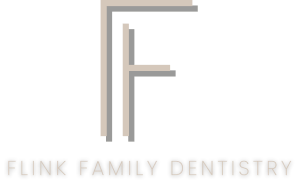1930 E. Rosemeade Pkwy #103 Carrollton, TX 75007


The eruption of baby teeth, also known as deciduous teeth or primary teeth, is a significant milestone in a child’s early dental development. From the first signs of teeth breaking through the gums to the completion of a full set of primary teeth, understanding the timeline and factors influencing eruption can help parents navigate their child’s dental care effectively. In this comprehensive guide, we explore the process of baby tooth eruption, typical timelines, variations, and proactive dental care tips for ensuring healthy dental development in children.
What is Baby Tooth Eruption?
Baby tooth eruption refers to the process by which deciduous teeth emerge through the gums and become visible in the mouth. These primary teeth serve crucial functions in chewing, speech development, and guiding the eruption of permanent teeth later in childhood and adolescence.
Early Signs of Baby Tooth Eruption
The eruption process begins before the teeth become visible, often with symptoms that indicate teeth are preparing to emerge:
- Gum Swelling and Tenderness: Before a tooth breaks through the gums, the surrounding tissue may appear swollen and feel tender to the touch.
- Increased Drooling: Babies may drool more than usual as teeth move closer to the surface.
- Irritability and Discomfort: Some children experience mild discomfort or irritability due to the pressure of teeth pushing through the gums.
Typical Timeline for Baby Tooth Eruption
While individual variations exist, baby teeth generally erupt in a predictable sequence and timeline:
- Lower Central Incisors (6-10 months): The first teeth to emerge are usually the lower central incisors, which are located at the front of the lower jaw.
- Upper Central Incisors (8-12 months): Shortly after the lower central incisors, the upper central incisors typically erupt, mirroring the lower teeth.
- Lateral Incisors (9-13 months): Next, the lateral incisors, located next to the central incisors, begin to emerge both in the upper and lower jaws.
- First Molars (13-19 months): The first set of molars, larger teeth located in the back of the mouth, usually appear next.
- Canines (16-22 months): Canine teeth, with their pointed shape, emerge between the lateral incisors and the first molars.
- Second Molars (23-33 months): Finally, the second set of molars erupts at the back of the mouth, completing the set of 20 primary teeth by around age 3.
Factors Influencing Eruption Times
Several factors can influence the timing of baby tooth eruption:
- Genetics: The timing of tooth eruption can be influenced by genetic factors inherited from parents.
- Overall Health: Systemic health conditions or developmental disorders may impact dental development and eruption times.
- Nutrition: Adequate nutrition, especially calcium and vitamin D, is essential for healthy tooth development.
- Gender: Girls often experience earlier tooth eruption than boys, though individual differences can still occur.
Monitoring Eruption Progress
Parents can monitor their child’s tooth eruption progress by observing the sequence of teeth appearing and noting any deviations from the typical timeline. Dr. Flink a Carrollton pediatric dentist can provide guidance and evaluate dental development during routine check-ups starting around age 1 or within 6 months of the first tooth eruption.
Proactive Dental Care Tips for Children
Promoting good oral hygiene habits and regular dental visits are crucial for supporting healthy tooth eruption and overall dental health:
- Brushing: Begin brushing your child’s teeth as soon as they erupt, using a soft-bristled toothbrush and a small amount of fluoride toothpaste.
- Dental Visits: Schedule regular dental check-ups to monitor eruption progress, identify any potential issues early, and receive preventive care such as fluoride treatments and dental sealants.
- Balanced Diet: Provide a balanced diet rich in calcium and essential vitamins to support healthy tooth development and eruption.
Baby tooth eruption marks an essential developmental stage in a child’s life, laying the foundation for proper chewing, speech development, and the future eruption of permanent teeth. By understanding the typical timeline for baby tooth eruption, recognizing signs of normal progression, and maintaining proactive dental care practices, parents can ensure their child’s dental development progresses smoothly.
For personalized guidance on your child’s dental development and eruption timeline, consult with a pediatric dentist who can provide expert care and support throughout each stage of your child’s oral health journey. Early intervention and regular dental visits play a crucial role in promoting a lifetime of healthy smiles and optimal dental wellness.
Understanding the process of baby tooth eruption empowers parents to actively participate in their child’s oral health care, fostering habits that support lifelong dental health and well-being. Stay informed, observe your child’s dental milestones, and partner with your dentist to ensure a bright and healthy smile for years to come.

